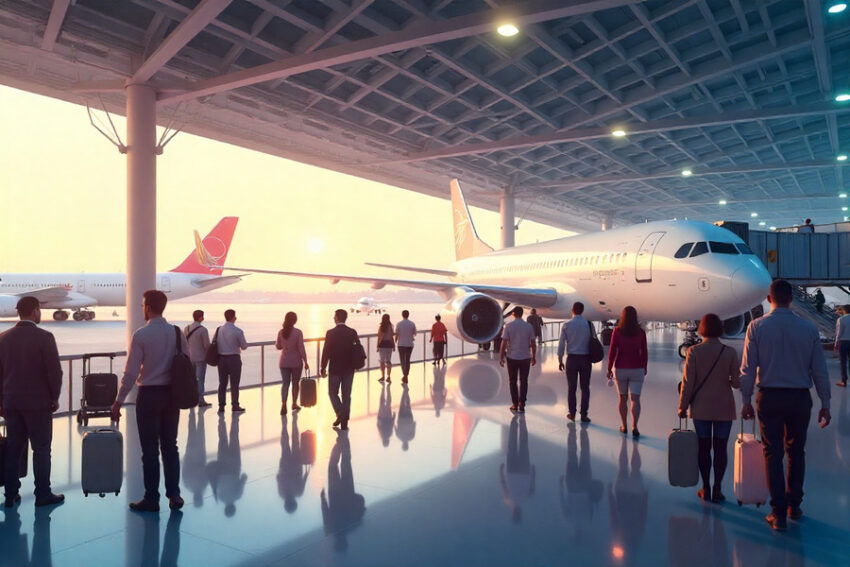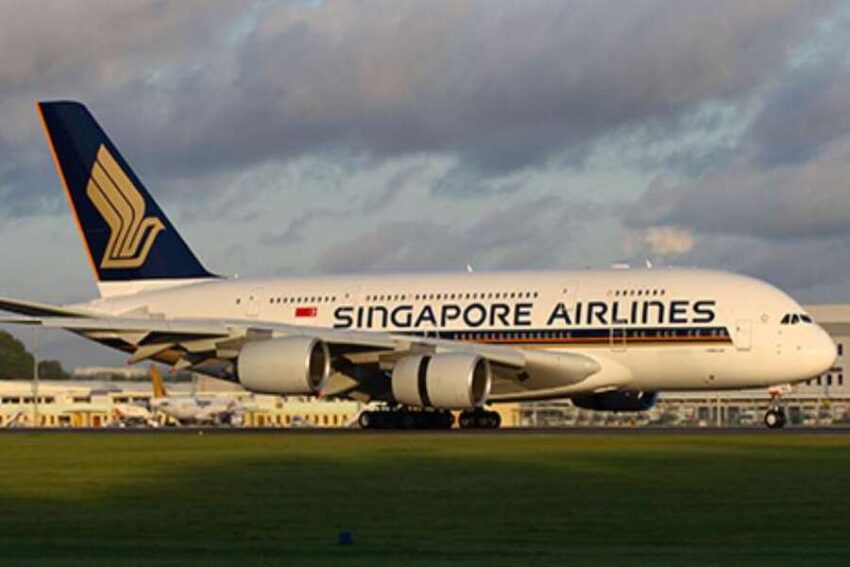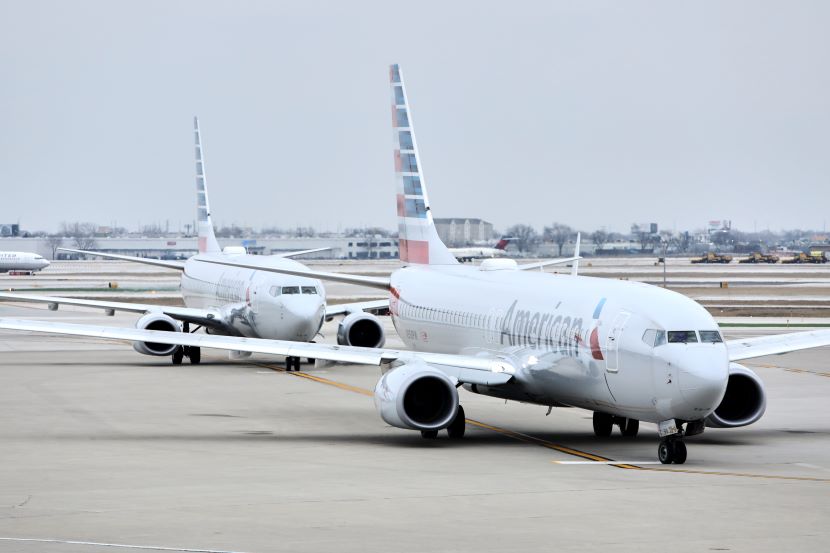Uttar Pradesh Sets New Air Travel Records What’s Driving The Explosive Growth In Five Months And How It’s Shaping India’s Aviation Future

Uttar Pradesh has set new air travel records, achieving a remarkable surge in passenger traffic over the past five months. The state’s aviation sector has witnessed unprecedented growth, with a 14.6% increase in air traffic, reshaping India’s aviation landscape. Key drivers behind this explosive growth include enhanced regional connectivity, the construction of new infrastructure like the Noida International Airport, and the rise in domestic and religious tourism. As these factors continue to evolve, Uttar Pradesh is not only leading the charge in regional aviation but also playing a pivotal role in the future trajectory of India’s broader aviation industry.
Uttar Pradesh, one of India’s most populous states, is experiencing a remarkable surge in air travel. Between April and August of this year, more than 6 million passengers flew from its airports, marking a significant 14.6% increase compared to the same period in 2024. This surge in passenger numbers highlights the fast-paced expansion of the state’s aviation network, positioning Uttar Pradesh as a major contributor to India’s growing air traffic. Today, the state accounts for 3.52% of the country’s total air traffic, meaning that approximately one in every 30 air travelers in India is flying from Uttar Pradesh.
One of the key developments driving this growth is the construction of the Noida International Airport, which is set to play a vital role in boosting the state’s aviation capacity. The airport is expected to enhance regional connectivity, introduce new flight routes, and increase the overall passenger capacity in the state. This infrastructure development comes at a time when air travel demand in Uttar Pradesh is on the rise, and it is expected to propel the state even further as a major hub for both domestic and international air travel.
The state’s air travel numbers have witnessed a rapid upward trajectory in recent years. In the fiscal year 2016-17, about 5.9 million passengers flew from airports within Uttar Pradesh. Fast forward to 2024-25, and that number has more than doubled to an estimated 14.2 million passengers. This includes 12.9 million domestic travelers and 1.3 million international travelers. The state has achieved a compound annual growth rate (CAGR) of 10.1% over the past several years, a clear reflection of the growing demand for air connectivity in the region. These numbers underscore the positive momentum Uttar Pradesh’s aviation sector is experiencing as it adapts to the rising demand for air travel.
The state’s rapid recovery from the devastating impact of the Covid-19 pandemic is also noteworthy. Like many regions around the world, Uttar Pradesh’s air travel industry was significantly affected by the pandemic, with passenger traffic plummeting to just 4.8 million in the fiscal year 2020-21. However, Uttar Pradesh was one of the fastest states in the country to recover. Within two years, passenger numbers had more than doubled, marking a swift and robust rebound. Between 2023-24 and 2024-25, the state’s total air passenger traffic grew by an impressive 25.9%, reflecting a strong recovery and continued growth in air travel demand.
Several factors contribute to Uttar Pradesh’s aviation boom, and one of the key drivers is the rise in regional connectivity. As the state invests in infrastructure and improves transportation links, cities across Uttar Pradesh are benefitting from increased air travel options. Airports in cities such as Ayodhya, Prayagraj, Varanasi, Gorakhpur, and Kanpur have become increasingly significant players in the state’s aviation expansion.
In particular, cities like Ayodhya, Prayagraj, and Varanasi have emerged as major catalysts in the state’s aviation growth. These cities, which have strong religious and cultural significance, are also experiencing an increase in religious tourism, which is contributing to the growing demand for air travel. For example, the number of passengers at Varanasi’s airport increased by 34.4% between 2023-24 and 2024-25. Prayagraj, another important city in Uttar Pradesh, saw an even greater increase, with passenger numbers rising by 76.4% over the same period. Gorakhpur and Kanpur also saw healthy growth in air passenger traffic, with increases of 27.6% and 13.3%, respectively. These figures are a testament to the expansion of air services to smaller cities and regional centers within the state, which is making air travel more accessible to a larger number of people.
The growing religious tourism sector in Uttar Pradesh has played an important role in boosting the state’s aviation numbers. Uttar Pradesh is home to several major religious sites, including Varanasi, Prayagraj, and Ayodhya, attracting millions of pilgrims and tourists each year. As the state develops its aviation infrastructure and enhances connectivity to these important locations, it is becoming increasingly easier for domestic and international visitors to access these sites by air. As a result, religious tourism continues to be a key factor driving the growth in air travel within the state.
Moreover, the growth of Uttar Pradesh’s air traffic is reflective of a broader trend in India, where air travel demand is increasing rapidly. As India’s middle class grows and more people have access to affordable air travel, states like Uttar Pradesh are benefitting from greater connectivity and a growing aviation sector. The increasing availability of affordable flights, coupled with improved infrastructure, has made air travel more accessible and appealing to a wider range of people.
Uttar Pradesh’s growing air travel industry is also contributing to the state’s economic development. As more travelers visit the state, both for business and leisure, the tourism industry is seeing a boost, leading to greater economic activity. The state’s growing number of domestic and international visitors is supporting local businesses, creating jobs, and encouraging investment in the region. Furthermore, improved air connectivity is helping to attract foreign investment and foster closer ties with global markets.
Uttar Pradesh has set new air travel records with a 14.6% surge in passenger traffic, driven by enhanced regional connectivity, infrastructure development, and a boom in tourism, positioning the state as a key player in shaping India’s aviation future.
Uttar Pradesh’s aviation sector is witnessing rapid growth, with air travel numbers soaring and passenger traffic increasing across several key cities. The ongoing development of infrastructure, including the Noida International Airport, will continue to fuel this growth and position the state as a major player in India’s aviation landscape. As Uttar Pradesh embraces the benefits of enhanced air connectivity and capitalizes on its growing tourism and economic potential, its air travel sector is poised for continued success in the years ahead.
The post Uttar Pradesh Sets New Air Travel Records What’s Driving The Explosive Growth In Five Months And How It’s Shaping India’s Aviation Future appeared first on Travel And Tour World.


